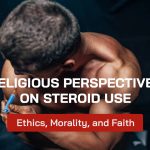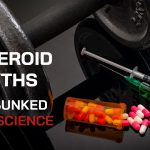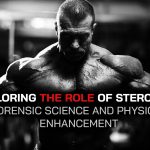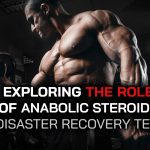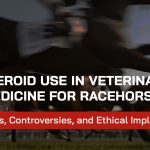Your basket is currently empty!
Category:
Arnold Schwarzenegger: The Iconic Journey of a Bodybuilding Legend
November 6th, 2024 by anabolicpointArnold Schwarzenegger is one of the most influential and recognized figures in bodybuilding and fitness. With his unprecedented physique, seven Mr. Olympia titles, and larger-than-life charisma, he transcended the bodybuilding stage to become a Hollywood superstar, an author, a businessman, and even a governor of California. Arnold’s journey from a small Austrian village to global fame is a story of ambition, hard work, and unyielding determination.
In this article, we’ll explore Arnold Schwarzenegger’s early life, his bodybuilding career, his Hollywood success, his transition into politics, and the physical toll that came with his dedication to bodybuilding.
Early Life and Background
Arnold Alois Schwarzenegger was born on July 30, 1947, in Thal, a small village near Graz, Austria. Raised in a strict household, Arnold had a challenging childhood, which he later credited with shaping his strong work ethic and resilience. His father, Gustav Schwarzenegger, was a police chief, and his mother, Aurelia, was a homemaker. Arnold had one older brother, Meinhard, and they grew up with limited resources. Despite this, Arnold was ambitious from an early age, setting goals to leave his small town and make a name for himself.
Arnold initially pursued sports through soccer, which was popular in Austria. However, at the age of 14, he discovered bodybuilding and found his passion. Arnold was inspired by bodybuilding icons like Reg Park, Steve Reeves, and Johnny Weissmuller, who became his heroes. By the age of 15, he began training in a local gym and soon developed a single-minded focus on becoming the world’s best bodybuilder. Arnold would sneak into local cinemas to watch movies featuring his idols and visualized a future where he would follow in their footsteps.
The Journey to Bodybuilding Stardom
At the age of 18, Arnold joined the Austrian Army, as it was mandatory for all Austrian men. Even during his military service, he maintained his rigorous training, often going to great lengths to continue his bodybuilding regimen. In 1965, Arnold went AWOL (absent without leave) to compete in the Junior Mr. Europe competition, which he won. His commitment impressed his superiors, and he was later allowed to focus more on bodybuilding, solidifying his path toward a professional career.
Arnold began gaining attention in Europe with his physique and charisma. He won his first major title, Mr. Europe, at 19 and quickly started setting his sights on international competitions. To achieve his dream, Arnold knew he needed to move to the United States, the heart of the bodybuilding world. In 1968, he moved to Venice Beach, California, a transition that would forever change his life and the sport of bodybuilding.
Career as a Professional Bodybuilder
In Venice Beach, Arnold started training at Gold’s Gym, known as the “Mecca of Bodybuilding,” where he would meet future legends like Joe Weider, Franco Columbu, and other top athletes. Weider, a bodybuilding promoter and publisher, saw potential in Arnold and began sponsoring him. This mentorship proved invaluable to Arnold’s career, as Weider helped guide him to new opportunities and provided a platform to showcase his physique.
In 1970, Arnold achieved his first Mr. Olympia title, defeating established bodybuilders and setting a new standard in the sport. At only 23, he became the youngest Mr. Olympia, and his victory marked the beginning of an era. Arnold went on to win seven Mr. Olympia titles (1970-1975, 1980), each time bringing a bigger, more refined, and more symmetrical physique. His blend of size, definition, and charisma captivated audiences and set a new bar for bodybuilding excellence. Arnold’s physique emphasized not just mass but also aesthetics, creating a balanced, classic look that was both powerful and visually appealing.
During this time, Arnold also competed in the Mr. Universe competition, where he gained international fame, and his rivalry with bodybuilders like Sergio Oliva and Lou Ferrigno added drama to the sport. His participation in the 1977 documentary Pumping Iron showcased his personality, wit, and competitive spirit. Pumping Iron not only boosted Arnold’s fame but also introduced bodybuilding to a broader audience. The film helped make bodybuilding a cultural phenomenon, with Arnold at its center.
Training Philosophy and Iconic Physique
Arnold was known for his grueling training sessions, which focused on high-volume, intense workouts. His routines often included supersets, high reps, and heavy weights. Arnold believed in “mind-muscle connection,” where he would focus intently on each muscle group during training, visualizing growth and contraction. His dedication to sculpting every detail of his body was evident in his physique.
Arnold’s arms, particularly his biceps, became legendary in bodybuilding. His chest, back, and legs were equally impressive, with each muscle group meticulously developed to create a symmetrical and balanced appearance. Arnold’s signature pose, the “double biceps” with a wide smile, became iconic in bodybuilding. His influence reached beyond the gym; he was one of the first bodybuilders to bring showmanship and charisma to the sport.
Transition to Hollywood Stardom
After retiring from competitive bodybuilding in 1975, Arnold set his sights on Hollywood. His early years were challenging, as casting agents criticized his accent, size, and unfamiliar name. However, Arnold’s perseverance paid off when he landed his breakout role in Conan the Barbarian (1982). His imposing physique and natural screen presence made him perfect for the role, and the film’s success opened doors in the industry.
In 1984, Arnold starred in The Terminator, directed by James Cameron, where he delivered his iconic line, “I’ll be back.” The film was a massive success and cemented Arnold’s status as a Hollywood superstar. He went on to star in several blockbusters, including Predator, Total Recall, Commando, and Kindergarten Cop, showcasing his range in both action and comedy. By the 1990s, Arnold had become one of the highest-paid actors in Hollywood, a remarkable achievement for a former bodybuilder from a small Austrian village.
Political Career and Contributions
In addition to bodybuilding and acting, Arnold ventured into politics. In 2003, he ran for governor of California as a Republican in a recall election and won, becoming the 38th Governor of California. He was re-elected in 2006, serving until 2011. As governor, Arnold focused on issues such as environmental conservation, climate change, and economic reform, often reaching across party lines to implement policies.
Arnold’s background as an immigrant and his story of achieving the American Dream resonated with many voters. His governorship wasn’t without challenges, but he remained committed to improving the state’s economic and environmental policies. His influence extended globally, as he advocated for climate action and sustainable energy solutions even after leaving office.
Health Challenges and Injuries
Despite his impressive physique and achievements, Arnold’s commitment to bodybuilding and action films came with a physical toll. Over the years, he faced numerous health challenges, particularly related to his heart and joints.
In 1997, Arnold underwent his first major heart surgery to replace a defective aortic valve, a condition he attributed to genetic factors rather than his bodybuilding lifestyle. He later underwent several more surgeries, including additional heart surgeries, as his health issues persisted. Despite these setbacks, Arnold maintained an active lifestyle, regularly training and promoting fitness.
In addition to heart surgeries, Arnold also dealt with various injuries, including hip and knee issues, which were partly due to years of heavy lifting and action film stunts. His commitment to fitness remained unshaken, however, and he adapted his training to focus more on longevity and joint-friendly exercises as he aged.
Legacy and Impact on Bodybuilding and Fitness
Arnold Schwarzenegger’s influence on bodybuilding, fitness, and popular culture is unparalleled. He revolutionized bodybuilding by popularizing it globally and transforming it from a niche sport into a mainstream phenomenon. His success inspired millions of people to take up fitness, and he remains an ambassador for bodybuilding and a role model for athletes worldwide.
Arnold’s contributions extend beyond his physique. Through events like the Arnold Sports Festival, which he founded in 1989, he has created opportunities for athletes in various disciplines. The annual event, held in Columbus, Ohio, is one of the largest multi-sport festivals in the world, featuring bodybuilding, powerlifting, strongman competitions, and more.
Continuing Influence: Social Media and Advocacy
In recent years, Arnold has embraced social media, where he shares fitness advice, motivational messages, and insights into his life. He uses his platform to promote fitness, health, and environmental awareness, engaging with millions of followers worldwide. Arnold’s presence on social media continues to inspire a new generation of fans who admire his commitment to fitness and advocacy.
Arnold’s passion for fitness has never waned. Despite his age and health issues, he continues to train, adapting his workouts to maintain his physical health and setting an example for lifelong fitness. His dedication to promoting fitness and health has made him a respected figure in the wellness community.
Conclusion: The Legacy of Arnold Schwarzenegger
Arnold Schwarzenegger’s journey from a young boy in Austria to a bodybuilding champion, Hollywood star, and governor of California is nothing short of remarkable. His life exemplifies the power of hard work, resilience, and ambition. Arnold’s influence on bodybuilding, fitness, and entertainment is enduring, and his legacy continues to inspire millions of people around the world.
His physique, competitive spirit, and charisma forever transformed the bodybuilding world, and his success in Hollywood opened doors for athletes across all sports. Today, Arnold is celebrated not only for his achievements but also for his contributions to society, his environmental advocacy, and his message of self-belief.
Arnold Schwarzenegger’s legacy is
Ronnie Coleman: The King of Bodybuilding
November 6th, 2024 by anabolicpointRonnie Coleman, known as “The King” of bodybuilding, is one of the most iconic figures in the sport. With a record-breaking eight Mr. Olympia titles and a career that reshaped the landscape of professional bodybuilding, Coleman is celebrated not only for his success on stage but also for his relentless dedication, inspiring work ethic, and his famous catchphrases that embody his high-energy personality. However, Ronnie’s journey has also been marked by significant personal struggles, especially regarding the severe injuries and health issues resulting from his intense training style. This article delves into the life, career, and legacy of Ronnie Coleman, chronicling his rise to fame, his remarkable achievements, and the sacrifices he made along the way.
Early Life and Background
Ronnie Dean Coleman was born on May 13, 1964, in Monroe, Louisiana, USA. He grew up in a humble environment and was raised by his single mother alongside his four siblings. From a young age, Coleman showed an interest in sports, excelling in football, basketball, and baseball during high school. His natural athleticism laid the foundation for his future in bodybuilding.
After high school, Coleman attended Grambling State University in Louisiana, where he studied accounting and played football as a middle linebacker. His physical prowess was evident even then, and he had already developed an impressive physique, although bodybuilding was not yet on his radar. After graduating, Coleman struggled to find work in his field and eventually moved to Texas, where he joined the Arlington Police Department.
The Introduction to Bodybuilding
It was during his time as a police officer that Ronnie Coleman was introduced to bodybuilding. His co-worker and fellow officer, Gustavo Arlotta, noticed Coleman’s natural size and strength and suggested he join Metroflex Gym, a hardcore training facility in Arlington, Texas. This gym would later become legendary in the bodybuilding world, largely due to Coleman’s career. It was at Metroflex Gym where Coleman met the gym’s owner, Brian Dobson, a former bodybuilder who saw immense potential in him.
Dobson offered Coleman a free gym membership if he would agree to compete in a bodybuilding show. With Dobson’s guidance, Coleman began training seriously and entered his first competition, the 1990 Mr. Texas. He won the heavyweight and overall titles in that show, an incredible achievement for a newcomer. This victory ignited Coleman’s passion for bodybuilding, and he soon set his sights on the professional stage.
Rising Through the Ranks
Throughout the early 1990s, Coleman competed in regional and national bodybuilding competitions, working tirelessly to improve his physique. In 1991, he earned his IFBB pro card by winning the heavyweight division at the World Amateur Championships. This marked the beginning of his professional bodybuilding career.
Coleman’s early years as a professional were marked by a series of lower placements in competitions. Despite his natural talent and dedication, he initially struggled to make a strong impression in the highly competitive bodybuilding scene. He placed poorly in major competitions, including the Mr. Olympia. It would take several years of intense training and refinement before he reached his true potential.
The Turning Point: Mr. Olympia Victory
In 1998, everything changed for Ronnie Coleman. He shocked the bodybuilding world by winning his first Mr. Olympia title, dethroning Flex Wheeler, who was favored to win that year. Coleman’s victory was groundbreaking; his size, density, and conditioning were unmatched, and he displayed a level of muscularity that had never been seen before. His victory marked the beginning of a new era in bodybuilding, where sheer mass and extreme definition would become the standard.
Coleman went on to win the Mr. Olympia title for eight consecutive years (1998-2005), tying Lee Haney’s record and solidifying his place in history. During this period, Coleman’s physique continued to evolve, with each competition bringing more size, conditioning, and detail to his already impressive frame. He became known for his enormous back and legs, which were considered among the best in bodybuilding history.
Coleman’s training philosophy was simple yet intense: heavy weights and high volume. His grueling workouts, including famously lifting 800 pounds for squats and deadlifts, became legendary. His dedication and strength set a new standard for what was possible, and he gained respect and admiration from fans and fellow athletes worldwide.
Famous Phrases and Training Philosophy
Ronnie’s high-energy personality shone through in his approach to training. He became famous for his catchphrases like “Yeah Buddy!” and “Lightweight Baby!” which he would shout during his most intense lifts. These phrases have become synonymous with his brand and are still quoted by fitness enthusiasts worldwide. They embody the spirit of his relentless work ethic and dedication.
His training style, often described as “brutal,” involved pushing his body to the absolute limit. Unlike many other bodybuilders who relied on machines, Coleman focused heavily on free weights, favoring exercises like squats, deadlifts, and bench presses with incredibly heavy loads. This approach built his unmatched physique but also took a severe toll on his body.
The Toll of Injuries
While Coleman’s strength and dedication to heavy lifting contributed to his success, they also led to serious injuries that would impact him later in life. Over the years, his spine, hips, and knees endured extreme strain from his rigorous training. During his Mr. Olympia reign, he dealt with herniated discs, torn ligaments, and other injuries, yet he continued to train and compete, often ignoring the pain.
After his competitive career, Coleman’s injuries worsened. By 2007, he underwent his first major surgery to repair damage to his back. This was the beginning of a long, painful series of surgeries. To date, Coleman has undergone more than a dozen surgeries on his back, hips, and neck, many involving fusion procedures and metal implants. Despite the surgeries, he continues to suffer from chronic pain and has lost much of his mobility, requiring assistance for basic tasks and using crutches or a wheelchair for mobility.
Coleman has been open about the pain and challenges he faces but maintains a positive outlook, often stating that he has no regrets. He views his injuries as the price he paid for doing what he loved and reaching the pinnacle of bodybuilding.
Life After Bodybuilding
Following his retirement from competitive bodybuilding, Ronnie Coleman shifted his focus to business and personal projects. He founded his own supplement company, Ronnie Coleman Signature Series, which offers a range of sports nutrition products aimed at athletes and fitness enthusiasts. His brand has become popular worldwide, and Coleman regularly travels to promote it, making appearances at fitness expos and events.
Coleman has also embraced social media, where he shares glimpses of his daily life, training philosophy, and insights on bodybuilding. Despite his physical challenges, he continues to train as much as possible, adapting his workouts to accommodate his limitations.
His openness about his injuries and positive attitude in the face of adversity have only enhanced his legacy. Coleman remains an inspirational figure, not only for his achievements but also for his resilience and passion for the sport.
The Legacy of Ronnie Coleman
Ronnie Coleman’s legacy in bodybuilding is unmatched. His dominance in the late 1990s and early 2000s redefined the standards for size and conditioning. He is considered one of the strongest and most muscular bodybuilders in history, and his influence on the sport is undeniable.
Coleman inspired countless athletes to push beyond their limits, demonstrating that with hard work, dedication, and mental toughness, even the most ambitious goals can be achieved. His personality, catchphrases, and unwavering passion have made him one of the most beloved figures in bodybuilding, and his story resonates with fans around the world.
Beyond his physical achievements, Coleman’s resilience in the face of injury and adversity serves as a powerful example. While he acknowledges the physical toll of his career, he remains grateful for the experiences and successes that bodybuilding brought him. His story is one of passion, determination, and an unbreakable spirit that continues to inspire the fitness community.
Ronnie Coleman’s Impact on Modern Bodybuilding
Today, bodybuilding remains heavily influenced by the standards Coleman set during his reign. His era of extreme mass and conditioning encouraged the next generation of bodybuilders to aim for unprecedented levels of muscularity. While some fans and critics debate the health implications of the modern “mass monster” era that Coleman helped pioneer, his achievements continue to be revered by athletes and enthusiasts alike.
Many modern bodybuilders cite Coleman as their inspiration, and his influence extends beyond the bodybuilding stage. Coleman’s training videos, featuring his intense workouts, have become legendary in the fitness community, motivating millions to push themselves in the gym. His catchphrases and enthusiasm for training have become part of bodybuilding culture, passed down from one generation to the next.
Conclusion
Ronnie Coleman’s journey is a testament to the power of dedication, passion, and resilience. Known as “The King” of bodybuilding, he set records, redefined standards, and inspired millions with his larger-than-life personality and exceptional work ethic. His physical achievements in bodybuilding are unparalleled, but it is his spirit and attitude that continue to resonate most with fans.
While his body may bear the scars of a legendary career, Ronnie Coleman remains a positive and resilient figure who lives with no regrets. His story is not just about bodybuilding; it’s about pursuing greatness, pushing limits, and accepting the sacrifices that come with success. For anyone with dreams and a drive to excel, Coleman’s legacy serves as a powerful reminder that anything is possible with determination, hard work, and a love for what you do.
The Top Ten Greatest Bodybuilders of All Time
November 6th, 2024 by anabolicpointBodybuilding has produced some of the most iconic athletes known for pushing the limits of human potential and reshaping the ideals of physical aesthetics. From the golden era of bodybuilding in the 1970s to today’s champions, each generation has introduced figures who stand out for their achievements, influence, and impact on the sport.
Here’s a look at the top ten best bodybuilders of all time, covering their accomplishments, unique contributions, and legacies that continue to inspire millions worldwide.
1. Arnold Schwarzenegger
Achievements and Legacy: Arnold Schwarzenegger is widely regarded as the most influential bodybuilder of all time. With seven Mr. Olympia titles (1970-1975, 1980) and a charismatic personality, he transcended bodybuilding to become a global icon. Known for his symmetrical physique, especially his massive chest and biceps, Arnold’s muscularity combined with a perfect aesthetic balance made him stand out. He played a crucial role in popularizing bodybuilding through his participation in the documentary Pumping Iron and his Hollywood career, which introduced bodybuilding to mainstream audiences.
Why He’s the Best:
Arnold’s legacy goes beyond titles. He set new standards for physique, made bodybuilding culturally relevant, and later promoted the sport as an ambassador and businessman through events like the Arnold Sports Festival.
2. Ronnie Coleman
Achievements and Legacy: Ronnie Coleman holds the record for eight Mr. Olympia titles (1998-2005), matching only Lee Haney. Known for his extreme size and muscle density, Coleman’s physique was unprecedented in terms of mass while maintaining a surprisingly aesthetic look. His work ethic, famously intense training style, and catchphrases (“Yeah Buddy!”) have made him an enduring figure in bodybuilding lore. His muscularity pushed the boundaries of what people believed was physically possible.
Why He’s the Best:
Ronnie is celebrated for his sheer size and competitive dominance. He represents the era of mass monsters in bodybuilding, and his influence on future athletes who aim for size and symmetry remains significant.
3. Lee Haney
Achievements and Legacy: Lee Haney redefined the standard of a champion in bodybuilding with his eight consecutive Mr. Olympia titles from 1984 to 1991, a record he shares with Ronnie Coleman. Known for his balanced, aesthetic physique and an impressive back, Haney competed in an era before extreme mass became the norm. His success was rooted in balance and symmetry, traits that made his physique legendary.
Why He’s the Best:
Lee Haney’s approach was about building an impressive, functional physique. He’s respected for his sportsmanship and influence, as he shifted the focus of bodybuilding toward health and longevity, mentoring younger bodybuilders and promoting fitness.
4. Dorian Yates
Achievements and Legacy: Dorian Yates won six Mr. Olympia titles from 1992 to 1997 and is credited with bringing an era of “mass monsters” to the stage. Known for his “blood and guts” training method, Yates pushed his body to extreme limits, maintaining unprecedented muscle density and definition. His thick, granite-like physique, especially his back, set new standards for the sport and changed bodybuilding forever.
Why He’s the Best:
Dorian’s era marked a shift toward larger, more defined physiques. His relentless training and methodical approach inspired a generation of athletes. He’s remembered not just for his physique but for his meticulous and scientific approach to training and recovery.
5. Phil Heath
Achievements and Legacy: Phil Heath, known as “The Gift,” claimed seven Mr. Olympia titles (2011-2017), nearly matching Arnold Schwarzenegger’s record. Heath’s physique is characterized by exceptional muscle detail, roundness, and balance. His deep muscle separation and overall aesthetic look set him apart in the modern era, even among athletes prioritizing mass.
Why He’s the Best:
Phil’s reign as Mr. Olympia during the 2010s brought a new emphasis on muscle shape and detail. His success and rivalries have brought excitement to modern bodybuilding, and he’s helped elevate the standards for precision and symmetry in the sport.
6. Sergio Oliva
Achievements and Legacy: Nicknamed “The Myth,” Sergio Oliva was a dominant force in the late 1960s. He won three Mr. Olympia titles (1967-1969) and was famously the only bodybuilder to ever defeat Arnold Schwarzenegger in an Olympia contest. Oliva’s V-taper, with his narrow waist and broad shoulders, was groundbreaking at the time, setting him apart from competitors.
Why He’s the Best:
Sergio’s incredible structure and proportions continue to inspire athletes today. His legendary physique and rivalry with Arnold Schwarzenegger added drama and excitement to the sport during its formative years, solidifying his place in bodybuilding history.
7. Frank Zane
Achievements and Legacy: Frank Zane, a three-time Mr. Olympia (1977-1979), is celebrated for his lean, aesthetic physique rather than raw mass. Known as “The Chemist,” Zane focused on achieving a symmetrical, artistic look. His bodyweight was much lower than many of his competitors, but his attention to detail, proportions, and conditioning made him one of the most respected athletes in bodybuilding.
Why He’s the Best:
Frank Zane showed that aesthetics could be as valuable as mass, and he remains a standard for symmetry and balance. His legacy endures, influencing athletes who favor aesthetic proportions over extreme size.
8. Jay Cutler
Achievements and Legacy: Jay Cutler won four Mr. Olympia titles (2006-2007, 2009-2010) and is one of the most successful and respected bodybuilders of the 2000s. Known for his immense quad development and massive frame, Cutler brought a fresh look to bodybuilding with his impressive size and conditioning. His rivalry with Ronnie Coleman is one of the most iconic in bodybuilding history.
Why He’s the Best:
Jay’s relentless pursuit of the Mr. Olympia title and his sportsmanship made him a fan favorite. His tenacity and dedication to improvement, especially his remarkable comeback in 2009, have made him an enduring figure in the sport.
9. Shawn Ray
Achievements and Legacy: Though Shawn Ray never won a Mr. Olympia title, he is one of the most respected bodybuilders for his consistent conditioning, symmetry, and stage presence. He placed in the top five of the Mr. Olympia competition 12 times, demonstrating a level of consistency and quality few athletes can match.
Why He’s the Best:
Shawn Ray is a testament to the importance of aesthetics, symmetry, and balance. His dedication to perfecting his physique despite never claiming the Mr. Olympia crown earned him a place among the greats.
10. Flex Wheeler
Achievements and Legacy: Often called one of the most genetically gifted bodybuilders, Flex Wheeler’s aesthetic lines, muscle roundness, and symmetry are unmatched. Though he never won a Mr. Olympia, he claimed victories in major competitions like the Arnold Classic and was a serious contender throughout the 1990s. His physique was so highly regarded that he’s often considered one of the best to never win Mr. Olympia.
Why He’s the Best:
Flex’s aesthetics, proportions, and flexibility in posing set him apart. His physique is still seen as one of the most balanced and beautiful in bodybuilding history, influencing athletes who aspire to a similar blend of aesthetics and muscle fullness.
Honorable Mentions
While the above athletes make up the top ten, there are several other remarkable bodybuilders who deserve recognition for their impact and achievements:
- Kevin Levrone – Known for his size, aesthetics, and legendary posing routines.
- Tom Platz – Famous for his extraordinary leg development and dedication to training.
- Rich Gaspari – Known for his shredded conditioning and introducing extreme leanness to the stage.
- Chris Dickerson – 1982 Mr. Olympia winner and an inspiration for athletes overcoming physical challenges.
The Evolution of Bodybuilding Through These Icons
Each of these ten bodybuilders has played a unique role in shaping the sport, contributing to the evolution of bodybuilding aesthetics, training methods, and competitive standards. As the sport continues to grow, their legacies inspire both new athletes and fans alike.
These ten athletes embody the different eras, philosophies, and aesthetics of bodybuilding. From Arnold’s pioneering influence in the 1970s to Ronnie’s dominance in the mass monster era, and Phil’s detail-oriented reign in the 2010s, each bodybuilder showcases the sport’s dynamic nature. Whether through sheer size, symmetry, or aesthetics, each of these athletes has left an indelible mark on the sport, proving that bodybuilding is a discipline, an art, and a testament to human potential.
The Ultimate Guide to Protein Supplements: Types, Benefits, and Key Differences
November 6th, 2024 by anabolicpointProtein is essential for everyone, but for athletes, bodybuilders, and active individuals, it’s even more crucial to optimize performance, build muscle, and recover efficiently. While protein-rich whole foods form the foundation of a balanced diet, protein supplements offer a convenient, concentrated way to meet increased protein needs. With a variety of protein supplements available, each with unique benefits, it’s essential to understand which type may be best suited to your goals.
In this article, we’ll dive into the most popular types of protein supplements, including whey protein concentrate (WPC), whey protein isolate (WPI), casein, plant-based options, and newer protein forms. We’ll also break down the differences, benefits, and ideal usage for each type.
Why Protein Supplements?
For many athletes, meeting high daily protein requirements can be challenging through food alone, especially when time and appetite are factors. Protein supplements provide:
- Convenience: Quick to prepare, ideal for post-workout and on-the-go nutrition.
- High Protein Content: Concentrated protein with minimal fats and carbs.
- Variety: Available in different flavors, types, and formulations to meet specific needs.
Beyond these benefits, protein supplements come in different types, each designed for various absorption rates, digestive properties, and unique nutrient profiles. Let’s start with the most popular category: whey protein.
Whey Protein: The Gold Standard in Protein Supplements
Whey protein is by far the most popular supplement due to its high biological value, rapid digestion, and excellent amino acid profile. Derived from milk, whey protein is a complete protein containing all nine essential amino acids, including branched-chain amino acids (BCAAs) like leucine, which plays a crucial role in muscle protein synthesis.
Types of Whey Protein
Whey protein is available in three main forms, each offering specific benefits:
- Whey Protein Concentrate (WPC)
- Whey Protein Isolate (WPI)
- Whey Protein Hydrolysate (WPH)
Whey Protein Concentrate (WPC)
What It Is: Whey protein concentrate is the least processed form of whey, typically containing about 70-80% protein by weight, with the remaining content consisting of fats, carbs, and lactose.
Benefits:
- High-quality protein source with natural fats and carbohydrates that can enhance flavor and creaminess.
- Affordable and widely available.
- Contains bioactive compounds that support immunity and overall health.
Ideal For: Individuals looking for an affordable protein supplement and those without lactose sensitivity. It’s excellent for overall muscle building and meal supplementation.
Whey Protein Isolate (WPI)
What It Is: Whey protein isolate undergoes further processing to remove most of the fat and lactose, resulting in a protein content of over 90%.
Benefits:
- Higher protein concentration than WPC with minimal carbs and fat.
- Ideal for lactose-sensitive individuals due to reduced lactose content.
- Easily digestible and quickly absorbed, making it great post-workout.
Ideal For: Athletes needing high-protein, low-carb diets, and those who are lactose intolerant. It’s also suitable for individuals on a calorie-restricted diet looking to maximize protein intake without extra calories.
Whey Protein Hydrolysate (WPH)
What It Is: Whey protein hydrolysate is partially pre-digested through enzymatic hydrolysis, breaking down proteins into smaller peptides for faster absorption.
Benefits:
- Rapid absorption, ideal for post-workout muscle repair.
- Low allergenic potential, suitable for those with mild dairy sensitivities.
- May stimulate muscle protein synthesis more effectively post-workout due to fast digestion.
Ideal For: Those looking for the fastest-digesting whey protein, especially post-workout. It’s also favored by individuals with sensitive digestion.
Casein Protein: The Slow-Digesting Option
Casein protein, also derived from milk, makes up about 80% of milk’s total protein. Unlike whey, casein forms a gel-like substance in the stomach, leading to a slower release of amino acids.
Benefits:
- Slow digestion provides a sustained release of amino acids, ideal for nighttime recovery.
- High in calcium, beneficial for bone health.
- Effective for muscle preservation during extended fasting periods.
Ideal For: Those looking to support muscle recovery overnight or during periods of prolonged fasting. It’s often used as a bedtime supplement to support muscle repair and prevent catabolism.
Plant-Based Proteins: Vegan and Dairy-Free Options
With the growing demand for plant-based diets, vegan protein supplements have become increasingly popular. Most plant-based proteins are incomplete on their own, so they’re often blended to achieve a complete amino acid profile.
Common Plant-Based Protein Types
- Pea Protein: Made from yellow split peas, it’s high in BCAAs and easily digestible.
- Rice Protein: A hypoallergenic option with a mild flavor, though it’s low in lysine.
- Soy Protein: A complete protein with all essential amino acids and comparable to whey in terms of muscle growth potential.
- Hemp Protein: Contains essential fatty acids (omega-3s) but is low in leucine, a key amino acid for muscle growth.
Blended Plant Proteins
Blended proteins often combine multiple plant sources, such as pea, rice, and quinoa, to achieve a more balanced amino acid profile. This makes them a suitable replacement for dairy-based proteins.
Benefits:
- Vegan-friendly and free from common allergens like dairy.
- High in fiber and other nutrients beneficial for digestion.
- Eco-friendly and sustainable protein source.
Ideal For: Vegans, vegetarians, and individuals with dairy or lactose intolerance. Blended plant proteins are also a good choice for anyone looking to diversify their protein sources.
Egg White Protein: A Complete, Lactose-Free Option
Egg white protein is a dairy-free, complete protein supplement with an amino acid profile similar to whey. It’s made from dehydrated egg whites and has a medium absorption rate.
Benefits:
- High-quality protein with a complete amino acid profile.
- Low in fat and carbs, making it suitable for low-calorie diets.
- Ideal for individuals with lactose intolerance or milk allergies.
Ideal For: People who want a complete, animal-based protein but are lactose intolerant. It’s also an excellent choice for cutting phases due to its low-calorie profile.
Collagen Protein: For Joint and Skin Health
Collagen protein is unique among protein supplements because it’s rich in amino acids like glycine and proline, which support joint, skin, and connective tissue health. However, it’s not a complete protein, as it lacks tryptophan, one of the essential amino acids.
Benefits:
- Supports skin elasticity, joint health, and connective tissue.
- Often used in combination with whey or other complete proteins for balanced nutrition.
- Ideal for recovery and anti-aging benefits.
Ideal For: Those focusing on joint and skin health, or individuals looking to support overall recovery. Collagen is often added to smoothies or meals for added benefits.
Protein Blends: Combining the Best of Multiple Proteins
Protein blends combine different types of proteins (like whey, casein, and egg) to create a balanced formula that provides both fast- and slow-digesting proteins.
Benefits:
- Provides a sustained release of amino acids, suitable for any time of day.
- Often has a more comprehensive amino acid profile due to the variety of sources.
- Versatile in usage, from post-workout to meal replacement.
Ideal For: Individuals who want a balanced, all-purpose protein powder. It’s especially useful for those who don’t want to buy multiple types of protein for different times of day.
Key Differences Between Protein Types
Understanding the distinctions between protein types can help you make an informed choice based on your specific needs and goals.
| Protein Type | Digestion Speed | Protein Content | Best For | Cost |
|---|---|---|---|---|
| Whey Concentrate (WPC) | Fast | 70-80% | General muscle building, affordable | $ |
| Whey Isolate (WPI) | Very Fast | 90%+ | Low-calorie diets, lactose-sensitive | $$ |
| Whey Hydrolysate (WPH) | Fastest | ~90% | Post-workout recovery, sensitive digestion | $$$ |
| Casein | Slow | ~80% | Overnight recovery, prolonged digestion | $$ |
| Plant-Based (Blended) | Moderate | 70-85% | Vegan/vegetarian, allergen-free | $$ |
| Egg White | Moderate | ~80% | Lactose-free, low calorie | $$ |
| Collagen | Moderate | ~90% | Joint and skin health, anti-aging | $$$ |
How to Choose the Right Protein Supplement
Your choice depends on several factors:
- Workout Timing: For fast absorption, choose whey isolate or hydrolysate. For slower release, go with casein or a protein blend.
- Dietary Restrictions: Plant-based proteins or egg white protein are ideal for lactose-intolerant or vegan individuals.
- Budget: Whey concentrate is the most budget-friendly option, while hydrolysates and blends tend to cost more.
- Specific Goals: If joint health is a concern, collagen may be beneficial. For muscle growth, opt for complete proteins like whey or plant-based blends.
Conclusion
Protein supplements are an excellent tool for those aiming to optimize muscle growth, recovery, and nutrition. With choices ranging from fast-acting whey to plant-based blends, there’s a protein type to suit every goal, dietary need, and budget. By selecting the right protein supplement, you can support your bodybuilding and fitness journey more effectively, ensuring that your body has the building blocks it needs to perform and recover optimally.
Protein in Bodybuilding: Common Questions Answered
November 6th, 2024 by anabolicpointProtein is one of the most essential nutrients for bodybuilders, fueling muscle growth, aiding recovery, and enhancing overall performance. Here, we address the most common questions bodybuilders have about protein, including what it is, the best sources, how to incorporate it into meals, and finding the optimal dosage for anabolic effects.
What Are Proteins?
Proteins are complex molecules made up of amino acids, which are the building blocks of muscle tissue, enzymes, and hormones. In bodybuilding, protein is crucial because it helps repair muscle fibers damaged during workouts, allowing them to grow stronger and larger. Protein is classified as a macronutrient, alongside carbohydrates and fats, meaning it’s a key dietary component required in relatively large amounts.
Why is Protein So Important for Muscle Building?
When you lift weights or engage in intense physical activity, muscle fibers experience microtears. Protein repairs and rebuilds these fibers, creating muscle hypertrophy (growth). Without enough protein, muscle recovery is compromised, and gains are limited.
Best Sources of Protein: Food and Supplements
Whole Food Sources
The ideal protein sources for bodybuilders are lean, complete proteins, which contain all essential amino acids necessary for muscle repair and growth. Here are some top whole food options:
- Chicken Breast – A bodybuilding staple, high in protein and low in fat.
- Eggs – Contain all essential amino acids, along with healthy fats and vitamins.
- Fish (Salmon, Tuna) – Provides quality protein and omega-3 fatty acids, which support muscle recovery.
- Lean Beef – Contains not only protein but also iron and B vitamins.
- Greek Yogurt – High in protein and contains probiotics, beneficial for digestion.
- Legumes (Beans, Lentils) – Good plant-based sources with fiber and other nutrients.
Supplement Sources
When it’s hard to reach protein needs from food alone, supplements can be a convenient solution.
- Whey Protein – Derived from milk, whey protein is quickly absorbed, making it ideal post-workout. It’s a complete protein with a high concentration of branched-chain amino acids (BCAAs), especially leucine, which is known for its role in muscle synthesis.
- Casein Protein – Another milk-derived protein, casein digests more slowly than whey, providing a steady supply of amino acids. It’s often taken before bedtime to support overnight muscle recovery.
- Soy Protein – A plant-based complete protein that’s popular among vegetarians and vegans. While it may not be as effective as whey, it still supports muscle growth.
- Pea and Rice Protein – Plant-based proteins often combined for a complete amino acid profile. They’re good options for those with dairy sensitivities.
Whey Protein Supplements: Types and Benefits
Whey protein supplements are highly valued in bodybuilding for their effectiveness and convenience. Here’s a breakdown of the main types:
- Whey Protein Concentrate (WPC) – Contains about 70-80% protein, with some fat and lactose. It’s a balanced option for most users.
- Whey Protein Isolate (WPI) – Contains around 90% protein or more, with minimal lactose and fat. This is ideal for those looking to maximize protein intake while minimizing additional calories.
- Whey Protein Hydrolysate (WPH) – Partially broken down, making it easier to digest and quickly absorbed. Often used by people with digestive issues or those looking for fast recovery post-workout.
Best Anabolic Dosage in a Meal
The anabolic (muscle-building) effect of protein is driven by both total daily intake and distribution throughout the day. Here’s what research suggests about optimizing protein intake for muscle growth:
- Total Daily Protein Intake – A general recommendation for bodybuilders is 1.6 to 2.2 grams of protein per kilogram of body weight per day. For a 70 kg person (154 lbs), this translates to 112–154 grams of protein daily.
- Per-Meal Dosage – Studies indicate that consuming about 20–40 grams of protein per meal can maximize muscle protein synthesis. For most, this amount covers the threshold needed for muscle repair and growth, with leucine being the key amino acid to trigger the process.
- Meal Frequency – It’s generally effective to distribute protein intake evenly across 4–5 meals throughout the day, providing a steady supply for muscle repair.
Protein-Rich Meal Examples
- Breakfast – Greek yogurt parfait with berries, oats, and a sprinkle of nuts (25–30 grams of protein).
- Lunch – Grilled chicken salad with quinoa, avocado, mixed greens, and a light vinaigrette dressing (30–35 grams of protein).
- Post-Workout – Whey protein shake blended with a banana and almond milk (25–30 grams of protein).
- Dinner – Salmon with sweet potato and steamed broccoli (30–35 grams of protein).
- Pre-Bed Snack – Cottage cheese with a handful of berries or nuts (15–20 grams of protein).
These meals are balanced to provide not only protein but also carbohydrates and healthy fats, aiding overall performance and recovery.
Protein Demand for Bodybuilders
While the general population’s daily protein needs range from 0.8 to 1.0 grams per kilogram of body weight, bodybuilders require significantly more to support muscle growth and recovery. Here’s a closer look at protein demand based on training goals:
- Maintenance and General Fitness – 1.2–1.6 grams of protein per kilogram of body weight. This amount is often sufficient for those looking to maintain current muscle mass.
- Muscle Gain (Hypertrophy) – 1.6–2.2 grams per kilogram of body weight. This range is ideal for individuals focused on building muscle through consistent strength training.
- Fat Loss with Muscle Retention – 2.0–2.5 grams per kilogram of body weight may be beneficial during a calorie deficit. Higher protein intake helps preserve lean mass while reducing fat.
For optimal results, it’s important for bodybuilders to combine adequate protein with proper training, rest, and overall balanced nutrition.
FAQs (most common questions related to protein)
1. What is protein, and why is it important in bodybuilding?
Answer: Protein is a macronutrient made up of amino acids, which are essential for building and repairing muscle tissue. In bodybuilding, protein is crucial for muscle growth, recovery, and repair after intense workouts.
2. How much protein do I need daily to build muscle?
Answer: For muscle growth, most bodybuilders aim for 1.6 to 2.2 grams of protein per kilogram of body weight daily. For example, if you weigh 70 kg (154 lbs), your goal would be 112–154 grams of protein per day.
3. What are the best sources of protein for muscle gain?
Answer: The best sources include lean meats (like chicken, turkey, and beef), fish (salmon, tuna), eggs, Greek yogurt, and plant-based options like legumes and quinoa. These whole foods are nutrient-dense and provide complete protein profiles.
4. Can I meet my protein needs through food alone, or should I use supplements?
Answer: You can meet protein needs through food alone, but supplements like whey protein are convenient and quickly absorbed, especially after workouts. Many bodybuilders use both whole foods and protein powders to reach their goals.
5. What are the different types of whey protein, and which one is best?
Answer: Whey protein comes in three types:
- Whey Protein Concentrate (WPC) – Contains around 70-80% protein, with some fat and lactose.
- Whey Protein Isolate (WPI) – Contains 90% protein or more, with minimal fat and lactose, making it ideal for low-calorie, high-protein diets.
- Whey Protein Hydrolysate (WPH) – Pre-digested and fast-absorbing, good for post-workout recovery.
- Best Choice: Whey Isolate is popular due to its high protein content and low fat.
6. How much protein should I eat per meal to maximize muscle growth?
Answer: Around 20–40 grams of protein per meal is typically sufficient to stimulate muscle protein synthesis. This amount covers the muscle-building threshold and helps keep protein intake steady throughout the day.
7. What are good examples of high-protein meals?
Answer:
- Breakfast: Greek yogurt with berries and nuts (25–30 grams).
- Lunch: Grilled chicken salad with quinoa (30–35 grams).
- Dinner: Salmon with sweet potato and broccoli (30–35 grams).
- Post-Workout: Whey protein shake (25–30 grams).
8. Is it better to consume protein before or after a workout?
Answer: Both can be beneficial, but consuming protein after a workout is often more effective as it supports muscle recovery and repair. A post-workout meal or shake with protein and carbs can be ideal for optimizing recovery.
9. Can you eat too much protein?
Answer: While there’s no strict upper limit, excessively high protein intake (more than 2.5–3 grams per kilogram of body weight) may strain kidneys over time and reduce the intake of other important nutrients. Stick within recommended guidelines for best results.
10. How does protein intake change when cutting (losing fat)?
Answer: When cutting, slightly higher protein (2.0–2.5 grams per kilogram) helps preserve muscle mass while in a calorie deficit. Increased protein intake also helps manage hunger and supports lean muscle retention.
Conclusion
Protein is essential in bodybuilding for muscle growth, recovery, and performance. By choosing high-quality sources from both food and supplements, distributing protein intake throughout the day, and adjusting the total intake according to body weight and goals, bodybuilders can maximize their progress. Remember that while supplements like whey and casein can provide a convenient boost, whole food sources should also be prioritized to cover a broad spectrum of nutrients essential for overall health.
Creatine for Muscle Growth: Benefits, Risks, and Forms of Creatine Explained
November 3rd, 2024 by anabolicpointWhat is Creatine?
Creatine is a naturally occurring compound found in small amounts in certain foods (especially red meat and fish) and synthesized in the human body from the amino acids arginine, glycine, and methionine. Most of it (about 95%) is stored in muscle tissue, where it is used to support energy production, especially during high-intensity, short-duration exercises like weightlifting or sprinting.
In muscles, creatine is stored as phosphocreatine, which acts as a reserve to quickly regenerate ATP (adenosine triphosphate), the primary energy carrier for cellular functions, especially muscle contraction. When muscles contract, ATP is rapidly used up, and phosphocreatine supplies an immediate way to replenish ATP levels. This ability to restore ATP quickly is why creatine has become a popular supplement for athletes and bodybuilders focused on enhancing strength, power, and muscle growth.
Benefits of Creatine for Building Muscle
- Increased Strength and Power Output
Creatine supplementation allows for greater ATP availability, which enables muscles to work harder and longer before fatigue sets in. For individuals engaging in resistance training, this means the ability to lift heavier weights, do more reps, and train at higher intensities, which are key factors in promoting muscle growth. Studies show that people taking creatine can see up to 15% improvement in high-intensity exercise performance, making it one of the most effective supplements for strength gains. - Enhanced Muscle Growth
By allowing athletes to lift more and train at higher intensities, creatine indirectly supports muscle hypertrophy. The harder you can work in the gym, the greater the stimulus for muscle growth. Additionally, creatine draws water into muscle cells, causing them to swell. This cell volumization effect not only makes muscles appear fuller but also promotes an environment that supports protein synthesis, the process through which muscles grow and repair. - Improved Recovery Between Sets
Creatine helps speed up the recovery of ATP between sets, allowing for shorter rest periods without sacrificing performance. This quicker recovery time allows for more volume and intensity in a workout, which can translate to greater muscle gains over time. Athletes who use creatine often report they feel less fatigued between sets and experience less muscle soreness, which can also help them train more frequently and intensely. - Supports Lean Muscle Mass Preservation
During periods of calorie restriction or weight loss, muscle mass is often at risk of being broken down for energy. Creatine helps counteract this effect by providing a readily available energy source, which can help to preserve lean muscle tissue. For individuals focused on cutting or maintaining muscle mass while reducing body fat, creatine offers an advantage by supporting muscle energy levels even on a reduced-calorie diet. - Potential Cognitive and Neurological Benefits
While not directly related to muscle growth, some studies suggest that creatine may support brain health by providing additional ATP to brain cells. This may result in improved mental focus and cognitive performance during workouts, allowing for better concentration and, potentially, more effective training sessions. Improved focus and mind-muscle connection can positively influence workout quality, which indirectly benefits muscle gains.
Risks of Creatine for Building Muscle
- Water Retention and Bloating
Creatine can cause muscles to retain water, which results in a temporary increase in body weight and may cause a slight feeling of bloating. For most users, this effect is not problematic and may even enhance muscle fullness. However, some people are sensitive to this side effect and may find the water retention uncomfortable. The bloating effect generally decreases after the initial loading phase, and alternative forms like creatine hydrochloride (HCl) may reduce this issue for sensitive users. - Digestive Discomfort
High doses of creatine, especially during the “loading phase” where 20 grams per day are consumed, can lead to gastrointestinal discomfort, including cramping, nausea, and diarrhea. Lower doses and alternative forms of creatine, such as micronized creatine, can help reduce these side effects. Alternatively, skipping the loading phase and using a lower daily maintenance dose of around 3–5 grams can also prevent digestive issues for many users. - Potential for Kidney Stress
There has been some concern about creatine’s effects on kidney health, as it increases the body’s levels of creatinine, a waste product often used as an indicator of kidney function. However, numerous studies have found that creatine supplementation does not harm the kidneys in healthy individuals. People with pre-existing kidney issues or concerns should consult a healthcare professional before using creatine, as it may exacerbate underlying kidney conditions in rare cases. - Long-Term Safety
Creatine is one of the most studied supplements, with research spanning several decades showing it to be safe for long-term use in healthy adults. However, as with any supplement, long-term effects can vary between individuals. Some recommend cycling creatine, taking it for several months followed by a few weeks off, to allow the body to adjust. However, no concrete evidence supports the need for cycling, and most people find creatine effective and safe for continuous use. - Possible Muscle Cramps and Dehydration
Some believe that creatine supplementation can increase the risk of muscle cramps and dehydration. However, research has not substantiated these claims. In fact, by drawing water into muscle cells, creatine actually promotes muscle hydration. Staying well-hydrated is still essential, especially during the initial loading phase, as the body will require additional water to accommodate increased cellular hydration. - Interactions with Caffeine and Other Substances
Some studies suggest that caffeine may reduce the efficacy of creatine, especially regarding high-intensity exercise. While more research is needed to confirm this interaction, some athletes avoid taking high doses of caffeine around the same time as creatine. Additionally, combining creatine with other stimulants or supplements should be done cautiously, as certain combinations may cause jitters, elevated heart rate, or other unintended effects.
Forms of Creatine
Creatine is available in various forms, each with unique properties, absorption rates, and potential benefits. While creatine monohydrate remains the most studied and widely used form, several other types offer alternatives that some users find advantageous. Here’s an overview of the main forms of creatine:
1. Creatine Monohydrate
Overview: Creatine monohydrate is the original and most researched form of creatine, known for its effectiveness and affordability. It consists of a creatine molecule combined with a water molecule, making it highly effective in increasing muscle phosphocreatine stores.
Benefits: This form of creatine is well-supported by science, with studies consistently showing its effectiveness in enhancing strength, muscle mass, and exercise performance. It is also very affordable and has a high safety profile.
Absorption: Creatine monohydrate has a moderate absorption rate. Some users experience water retention with this form due to increased cellular hydration, which is often seen as a benefit for muscle fullness but may cause minor bloating for others.
Popular Types: Micronized creatine monohydrate is a refined version of regular creatine monohydrate, with smaller particles for better solubility and reduced digestive discomfort.
2. Creatine Hydrochloride (HCl)
Overview: Creatine hydrochloride (HCl) is a form of creatine combined with hydrochloric acid. This formulation increases its water solubility, leading to better absorption and reduced digestive issues.
Benefits: Due to its improved solubility, creatine HCl is less likely to cause bloating and water retention. Users typically require smaller doses (around 1-2 grams) compared to creatine monohydrate, which can reduce stomach discomfort.
Absorption: With higher solubility, creatine HCl is absorbed more effectively than monohydrate, potentially leading to faster results with smaller doses.
Popular Use: People who experience bloating or digestive issues with creatine monohydrate often choose creatine HCl. It’s also popular among those looking for a lower-dose option that still provides performance benefits.
3. Creatine Ethyl Ester (CEE)
Overview: Creatine ethyl ester is created by attaching an ester molecule to creatine, intended to enhance its absorption by making it more lipid-soluble.
Benefits: Originally, creatine ethyl ester was thought to improve bioavailability and reduce water retention. However, studies have shown mixed results regarding its effectiveness compared to monohydrate.
Absorption: Though CEE was designed for better absorption, recent research suggests it may not be as effective as creatine monohydrate in increasing muscle creatine levels. As a result, its use is less common than initially anticipated.
Popular Use: Some athletes still choose CEE in the hopes of reducing water retention, but its popularity has waned due to a lack of evidence supporting its superiority over monohydrate.
4. Buffered Creatine (Kre-Alkalyn)
Overview: Buffered creatine, or Kre-Alkalyn, is creatine monohydrate that has been “buffered” with an alkaline powder to improve stability and reduce degradation in the stomach.
Benefits: Buffered creatine aims to reduce the conversion of creatine to creatinine (a byproduct that doesn’t aid performance) in the digestive system. This buffering is thought to allow for smaller doses with similar benefits to monohydrate.
Absorption: Buffered creatine may be more stable in the stomach, potentially leading to improved absorption, though studies show it does not significantly outperform creatine monohydrate.
Popular Use: Users interested in avoiding high-dose creatine loading phases may opt for buffered creatine, though it is generally more expensive and offers similar effects to monohydrate.
5. Creatine Magnesium Chelate
Overview: This form combines creatine with magnesium, which may enhance ATP production and absorption. Magnesium is crucial for ATP synthesis, and this pairing was developed to leverage the complementary effects of both nutrients.
Benefits: Creatine magnesium chelate may offer benefits for both ATP production and creatine absorption. Additionally, the magnesium component may reduce cramping and support overall muscle health.
Absorption: This type of creatine is moderately absorbed, though studies are limited. Some users report that it offers the benefits of creatine with fewer digestive issues.
Popular Use: Athletes looking for a creatine source with additional muscle health benefits may find this combination appealing, particularly if they want to supplement with magnesium simultaneously.
6. Liquid Creatine
Overview: Liquid creatine is creatine suspended in a liquid solution for ease of use and faster absorption. Some products claim that liquid creatine offers immediate absorption without the need for a loading phase.
Benefits: Liquid creatine is convenient to take and often marketed as a quick-absorbing option. However, its stability is questioned, as creatine tends to degrade in liquid over time, converting to creatinine, which has no performance benefits.
Absorption: Liquid creatine might be absorbed faster, but due to potential degradation, it often loses potency. Studies indicate it may not be as effective as powdered creatine monohydrate.
Popular Use: While convenient, liquid creatine is not widely used due to stability concerns. Those who prefer easy dosing might find it helpful, though it typically does not match the effectiveness of powdered forms.
7. Creatine Nitrate
Overview: Creatine nitrate is a combination of creatine and nitrate, designed to improve solubility and offer the additional benefits of nitrate, such as enhanced blood flow and vascularity.
Benefits: In addition to the performance benefits of creatine, the nitrate component may improve nitric oxide production, which enhances blood flow and oxygen delivery to muscles during exercise.
Absorption: Creatine nitrate is highly water-soluble, potentially leading to faster absorption. The nitrate may also help with muscle endurance by improving circulation.
Popular Use: This form is popular among athletes who are interested in both the strength benefits of creatine and the vascular benefits of nitrates. However, its overall effects may not be dramatically different from monohydrate.
8. Creatine Pyruvate
Overview: Creatine pyruvate is creatine bonded with pyruvic acid, intended to improve endurance and reduce fatigue by aiding in energy production through aerobic pathways.
Benefits: This form combines the benefits of creatine with pyruvate, which plays a role in the body’s energy production pathways. Some studies suggest it may enhance endurance more effectively than monohydrate alone.
Absorption: Creatine pyruvate is more soluble than monohydrate, which may enhance absorption. However, the endurance benefits over creatine monohydrate are still under research.
Popular Use: This form is appealing to those involved in endurance sports, such as long-distance running or cycling, who want both creatine’s benefits for short-term energy and pyruvate for aerobic endurance.
9. Multi-Component Creatine Blends
Overview: Multi-component creatine blends combine several types of creatine into one product. These blends aim to provide a well-rounded creatine profile, often including monohydrate, HCl, and other types to maximize absorption and effectiveness.
Benefits: By combining different types, these blends claim to offer improved absorption and multiple benefits. The various creatine forms work together to saturate muscles quickly and efficiently.
Absorption: Multi-component blends often claim improved bioavailability due to the combined properties of each creatine type, though their effectiveness varies depending on the brand and formulation.
Popular Use: These blends are popular among users who want to experiment with different types of creatine without having to buy each form individually. However, they are generally more expensive than using monohydrate alone.
Summary
Creatine monohydrate remains the gold standard due to its extensive research, affordability, and effectiveness. However, alternative forms like creatine hydrochloride and creatine nitrate provide options for those looking to minimize side effects or add additional benefits. Each type offers unique advantages, with some forms tailored to specific needs, such as reducing water retention, improving absorption, or enhancing endurance. For most people, creatine monohydrate is sufficient, but those with specific goals or sensitivities may benefit from exploring other types.
Final Thoughts
Creatine is one of the most effective and well-researched supplements for enhancing strength, power, and muscle growth. By supporting ATP production, creatine allows for greater performance in high-intensity, short-duration exercises, which are key to building muscle. The benefits extend beyond muscle growth to include quicker recovery and possible cognitive advantages, making creatine a comprehensive supplement for both physical and mental performance enhancement.
While generally safe for most individuals, creatine may cause minor side effects, such as bloating, digestive discomfort, or increased water retention. Those with pre-existing kidney issues should consult a healthcare provider before beginning supplementation. When used correctly, creatine offers a substantial boost in strength and muscle-building potential, making it a staple in many athletes’ and bodybuilders’ routines.


